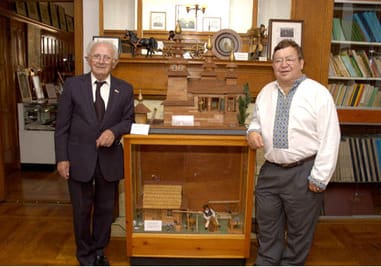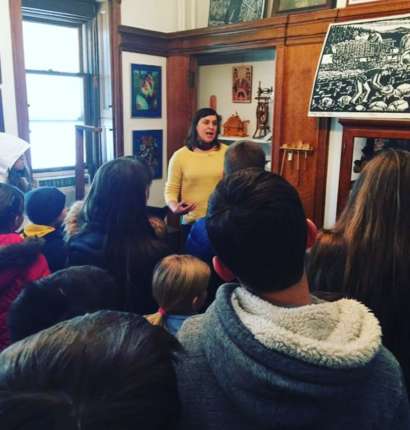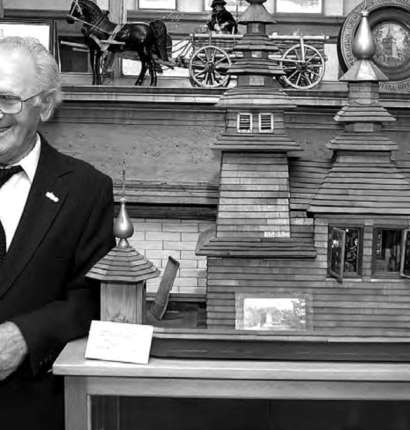Ukrainian Lemko Museum

Some fathers build their daughters dollhouses. Ivan Honchak built his a model Lemko church.
Honchak, who was born in the Lemko village of Bortne in 1923 and taken to work in Germany in 1942, immigrated to the United States as a young man, but somehow managed to remember the minute details of the church in which he was christened.
As a little girl, Honchak’s daughter liked to ask him questions about Lemkivshchyna – how had he lived, and what did he eat there? – so he decided to recreate, from memory, a detailed, smaller version of the Bortne church for her as something of a toy, he said.
Read More
“People ask me if I had a blueprint,” Honchak said. “No, God gave me the plans for it. God gave me the idea how to do it. I’m not an engineer. It just came to my head.”
That model of the 162-year-old, wooden Bortne church is now housed in the Lemko Museum in Stamford, CT for others to see. The Lemko Museum, which strives to preserve artifacts of Lemko regional culture, was recently renovated and can be viewed anytime by appointment.
Honchak was one of dozens of people who came to the Lemko Museum, located at St. Basil’s Seminary, when it was open to the public for the Ukrainian Day Festival on September 12. He was happy to show the visitors his donated work, which also included wooden replications, complete with moving mechanical parts, of farm instruments used in Lemkivshchyna.
“Wow, you’re talented,” said Andrea Boucher, 14, of Wyndham, CT to Honchak as she peered inside the model church. “It’s beautiful. I’d be lucky if I remembered what I had last night for supper.”
Visitors filed past the exhibited Lemko pysanky , or Easter eggs, which are characteristic because of the short, quick strokes used to make them, and past reproduced works of Lemko artist Nikifor Drowniak, who, illiterate and disabled, acquired international renown in the 1960’s for his water-colour paintings.
Other displays include Lemko folk costumes, wooden carvings, and pictures from historical Congresses of Lemko organizations.
Showing his young daughter around, Aleksander Zyla, 53, who was born in western Poland after his family was forcibly relocated from Lemkivshchyna in 1947, said he came to the museum to remember Lemko history and traditions.
“I always listened to my parents talking about the land they lived on. Kids in the U.S. don’t understand unless you show them in reality,” said Zyla, who has been to the Lemko Museum approximately 10 times. “I love it. This is part of coming back here to the festival.”
Marta Rudyk of New Haven CT, a fifth-time visitor to the museum, said that she enjoys looking at the items donated by past generations, as well as having seen the museum grow little by little over the years.
The Lemko Museum, founded by the World Federation of Lemkos in the 1980’s, was originally located in the home of Mr. Mykola Duplak in Syracuse, NY, before being moved to the two rooms it currently occupies at St. Basil’s, said Steven Howansky, curator since 1993. The museum functions on the basis of volunteerism and donations.
Although there have not been many items added to the Lemko Museum recently, the existing artifacts have been displayed more clearly, with new descriptions that visitors can read, Howansky said.
“We want to preserve our tradition, our culture, our things that remained after our forefathers,” said Howansky, who was five-years-old when he was relocated with his family during Akcja “Wisla” in 1947. “We want our traditions to be kept because our history is interesting and close to our heart.”
Article written by Diana Howansky
For more information about the Ukrainian Lemko Museum, contact Lena Howansky at 203-703-8864.
Visits to the museum for both individuals and groups, particularly students, can be arranged.





